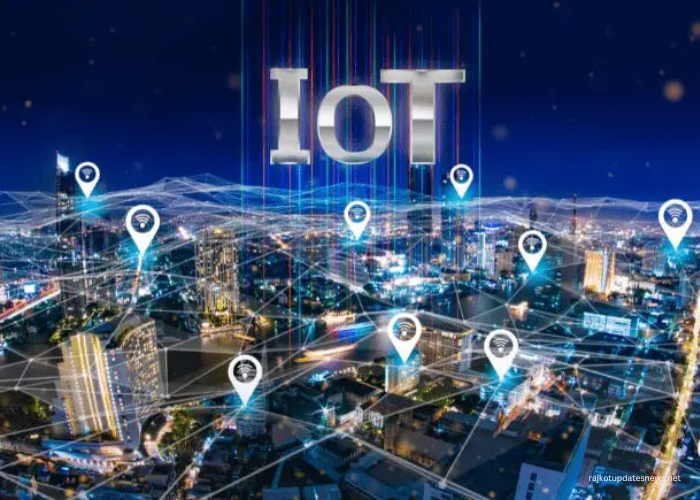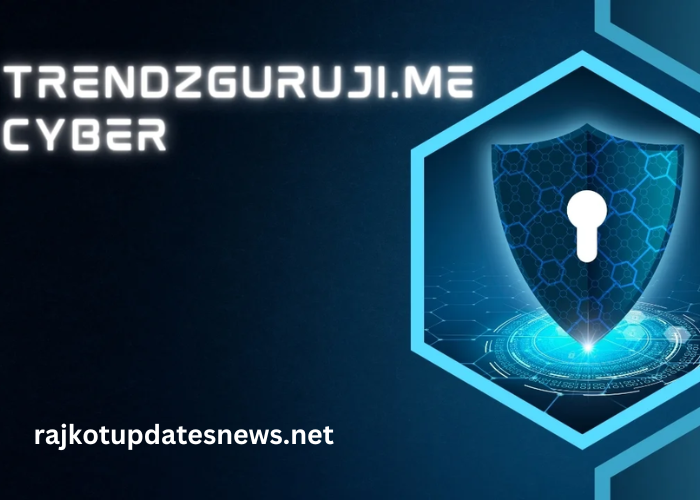The concept of smart cities has evolved rapidly over the past decade, driven largely by advancements in technology and an increasing awareness of the need for sustainable urban living. At the heart of this evolution is the Internet of Things (IoT), a network of interconnected devices that communicate and share data to improve efficiency, reduce waste, and enhance the quality of life for citizens. IoT’s transformative potential in shaping smart cities is vast, encompassing various aspects of urban life, from traffic management and energy consumption to public safety and environmental monitoring. This article explores how IoT is shaping the smart cities of tomorrow, its benefits, challenges, and the future it promises.
The Role of IoT in Smart Cities
IoT technology enables smart cities to leverage data collected from various sources, including sensors, cameras, and smart devices, to make informed decisions and optimize urban operations. This data-driven approach allows cities to respond more dynamically to the needs of their inhabitants, improving efficiency and sustainability.
- Traffic and Transportation Management: One of the most significant applications of IoT in smart cities is traffic and transportation management. IoT-enabled sensors placed on roads, traffic lights, and vehicles collect real-time data on traffic flow, congestion, and road conditions. This data is then analyzed to optimize traffic light timings, suggest alternative routes to drivers, and manage public transportation more effectively. For instance, smart traffic lights can adjust their signals based on the actual traffic conditions, reducing waiting times and minimizing fuel consumption. Moreover, IoT can facilitate the development of autonomous vehicles by providing them with the necessary data to navigate safely and efficiently.
- Energy Management: IoT plays a crucial role in enhancing energy efficiency in smart cities. Smart grids, which use IoT devices to monitor and manage energy distribution, can balance supply and demand in real-time, reducing energy waste and lowering costs. Smart meters installed in homes and businesses provide detailed insights into energy usage, allowing consumers to make more informed decisions about their consumption patterns. Additionally, IoT-enabled sensors can monitor the performance of streetlights, automatically dimming or turning them off when not needed, which reduces energy consumption and maintenance costs.
- Public Safety and Security: IoT technology significantly enhances public safety and security in smart cities. Surveillance cameras equipped with IoT capabilities can detect unusual activities or emergencies, such as accidents or natural disasters, and alert the authorities in real time. IoT devices can also be integrated into emergency response systems to improve coordination and response times. For example, smart fire alarms can detect smoke or fire and automatically alert emergency services, providing them with precise location data and potentially saving lives.
- Environmental Monitoring: IoT devices play a vital role in monitoring environmental conditions in smart cities. Sensors placed throughout the city can measure air quality, noise levels, and water quality, providing real-time data to city officials and residents. This information can be used to identify pollution hotspots, implement mitigation strategies, and ensure compliance with environmental regulations. Additionally, IoT can help manage waste more efficiently by monitoring the fill levels of trash bins and optimizing collection routes, reducing fuel consumption and greenhouse gas emissions.
- Healthcare and Well-being: IoT has the potential to revolutionize healthcare in smart cities by enabling remote monitoring and management of health conditions. Wearable devices can track vital signs, such as heart rate and blood pressure, and alert healthcare providers if any abnormalities are detected. This can lead to faster diagnosis and treatment, improving patient outcomes and reducing healthcare costs. Furthermore, IoT can be used to manage chronic diseases more effectively, allowing patients to receive personalized care and reducing the burden on healthcare systems.
Benefits of IoT in Smart Cities
The integration of IoT technology into urban infrastructure offers numerous benefits for cities and their inhabitants.
- Enhanced Efficiency and Cost Savings: IoT enables cities to optimize their operations, reducing waste and lowering costs. For example, smart grids can reduce energy consumption by balancing supply and demand, while smart waste management systems can minimize fuel costs by optimizing collection routes. These efficiencies translate into significant cost savings for cities, which can be reinvested into other areas, such as education, healthcare, and public services.
- Improved Quality of Life: By providing real-time data on various aspects of urban life, IoT allows cities to respond more effectively to the needs of their inhabitants. This can lead to improved public services, such as more efficient transportation systems, better waste management, and enhanced public safety. Moreover, IoT can contribute to a cleaner and healthier environment by monitoring air quality, reducing energy consumption, and minimizing waste.
- Increased Sustainability: IoT technology can help cities become more sustainable by optimizing resource use and reducing their environmental impact. Smart grids, for example, can reduce energy waste and lower greenhouse gas emissions, while smart waste management systems can minimize landfill use and promote recycling. These initiatives contribute to a more sustainable urban environment, benefiting both current and future generations.
- Enhanced Public Safety and Security: IoT-enabled surveillance cameras, sensors, and emergency response systems can significantly enhance public safety and security in smart cities. By providing real-time data and alerts, these systems allow city officials to respond more quickly to emergencies and prevent crimes, ensuring a safer environment for residents and visitors.
Challenges of Implementing IoT in Smart Cities
While the potential benefits of IoT in smart cities are immense, there are several challenges that need to be addressed to ensure its successful implementation.
- Data Privacy and Security: One of the primary concerns with IoT technology is the potential for data breaches and privacy violations. With millions of connected devices collecting and transmitting data, there is a risk that sensitive information could be intercepted or misused. To mitigate this risk, cities must implement robust security measures, such as encryption, authentication, and regular security audits, to protect data and ensure privacy.
- Interoperability and Standardization: IoT devices often come from different manufacturers and use different communication protocols, making it challenging to integrate them into a cohesive system. To address this issue, cities need to adopt standardized protocols and ensure that IoT devices are interoperable, allowing them to communicate and share data effectively.
- Infrastructure and Connectivity: Implementing IoT technology in smart cities requires a robust and reliable infrastructure, including high-speed internet connectivity and adequate power supply. In many cities, especially in developing countries, this infrastructure may not be readily available, posing a significant barrier to IoT adoption. To overcome this challenge, cities must invest in upgrading their infrastructure and ensuring that it is capable of supporting IoT devices and applications.
- Cost and Investment: Deploying IoT technology in smart cities can be expensive, requiring significant upfront investment in devices, infrastructure, and personnel. Additionally, ongoing maintenance and upgrades are needed to ensure that IoT systems remain functional and secure. To address this challenge, cities must carefully plan their IoT investments, prioritize initiatives that offer the greatest return on investment, and explore funding options, such as public-private partnerships and government grants.
The Future of IoT in Smart Cities
As IoT technology continues to evolve, its impact on smart cities is expected to grow, offering new opportunities and challenges. The future of IoT in smart cities will likely be shaped by several key trends, including:
- Artificial Intelligence and Machine Learning: The integration of artificial intelligence (AI) and machine learning with IoT technology will enable smart cities to analyze data more effectively and make more informed decisions. For example, AI algorithms can be used to predict traffic patterns, optimize energy consumption, and detect potential security threats, enhancing the efficiency and effectiveness of IoT systems.
- 5G Connectivity: The rollout of 5G networks will significantly enhance the capabilities of IoT devices, providing faster data transmission speeds, lower latency, and improved reliability. This will enable smart cities to deploy more IoT devices and applications, such as autonomous vehicles and remote healthcare, and support a wider range of use cases.
- Edge Computing: Edge computing, which involves processing data closer to the source rather than in a centralized cloud, will play a crucial role in the future of IoT in smart cities. By reducing the amount of data that needs to be transmitted and processed, edge computing can improve the performance and responsiveness of IoT systems, enabling real-time decision-making and reducing the strain on network infrastructure.
- Increased Focus on Sustainability: As concerns about climate change and resource depletion continue to grow, cities will increasingly prioritize sustainability in their IoT initiatives. This will involve deploying IoT technology to monitor and reduce energy consumption, promote recycling and waste reduction, and enhance environmental monitoring and protection.
Conclusion
The Internet of Things is playing a transformative role in shaping the smart cities of tomorrow, offering numerous benefits in terms of efficiency, sustainability, and quality of life. However, the successful implementation of IoT in smart cities requires addressing several challenges, including data privacy, interoperability, infrastructure, and cost. As technology continues to advance, IoT will become an increasingly integral part of urban life, driving innovation and enabling cities to become more responsive, sustainable, and livable.



